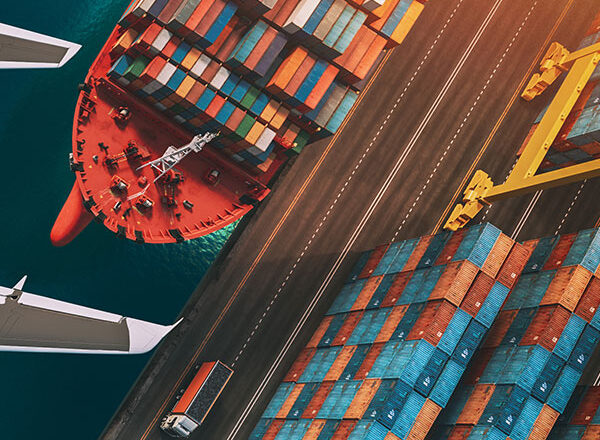🌊 Sea Freight: The Backbone of Global Trade
Sea freight, also known as ocean freight, is the transportation of goods by cargo ships across international waters. It is the most widely used method for moving large quantities of goods over long distances, accounting for over 90% of global trade by volume.
Whether it’s containers full of electronics, bulk commodities like oil or grain, or vehicles and machinery, sea freight provides a cost-effective and scalable solution for international shipping.
🚢 What is Sea Freight?
Sea freight is the process of transporting cargo via ships through ocean routes. It involves packing goods in containers or bulk form and moving them between seaports across different countries or continents.
It is ideal for businesses shipping:
-
Large quantities
-
Heavy or bulky items
-
Non-urgent deliveries
-
Goods with extended shelf life
🧱 Types of Sea Freight
1. FCL (Full Container Load)
-
You rent and fill an entire container.
-
Best for large shipments (usually over 15 cubic meters).
-
Offers better security and fixed rates.
2. LCL (Less than Container Load)
-
You share container space with other shippers.
-
Best for smaller shipments.
-
Cost-effective, but can take longer due to consolidation.
3. Bulk Cargo
-
Raw materials like coal, grains, oil, or ore are shipped loose.
-
Carried on specialized bulk carriers or tankers.
4. Ro-Ro (Roll-on/Roll-off)
-
Vehicles are driven directly onto ships and off at the destination.
-
Common for cars, trucks, and machinery.
5. Break Bulk
-
Large or heavy items that can’t fit in containers (e.g., turbines, construction equipment).
-
Loaded individually, often with cranes.
🌍 Sea Freight Process Overview
-
Booking & Documentation
-
Choose a shipping line or freight forwarder.
-
Prepare a bill of lading, packing list, and commercial invoice.
-
-
Packing & Container Loading
-
Goods are loaded into containers or bulk carriers.
-
Containers are sealed and labeled with identification numbers.
-
-
Transportation to Port
-
Cargo is transported to the port of loading via truck or rail.
-
-
Customs Clearance (Export)
-
Export documents are submitted and reviewed by customs authorities.
-
-
Ocean Transit
-
Ship departs and travels to the port of destination.
-
Transit times vary (e.g., ~30 days from Asia to Europe).
-
-
Customs Clearance (Import)
-
Upon arrival, cargo is inspected and cleared by customs.
-
-
Final Delivery
-
Cargo is unloaded, deconsolidated (if LCL), and delivered to the final address.
-
✅ Advantages of Sea Freight
| Benefit | Description |
|---|---|
| 🚛 High Capacity | Ideal for shipping massive volumes and heavy cargo. |
| 💰 Cost-Effective | Lowest cost per unit compared to air or road. |
| 🌱 Eco-Friendly | Lower carbon emissions per ton compared to air freight. |
| 🗺 Global Reach | Connects major markets across all continents. |
| 📦 Variety of Cargo Types | Supports containerized, liquid, and bulk goods. |
⛔ Challenges of Sea Freight
-
Longer Transit Times: Slower than air freight (2–8 weeks).
-
Port Congestion & Delays: May affect delivery timelines.
-
Customs & Compliance: Requires careful document handling.
-
Weather Dependency: Storms and rough seas can delay ships.
-
Complex Handling: Requires coordination between ports, freight forwarders, and inland transport.
📦 What Can You Ship by Sea Freight?
-
Consumer goods (electronics, textiles, toys)
-
Industrial equipment and machinery
-
Cars and trucks
-
Agricultural commodities (grains, sugar, coffee)
-
Chemicals and liquids (in tank containers)
-
Construction materials (steel, cement, timber)
📈 Trends in Sea Freight Logistics
🌐 Digitalization
-
Electronic bills of lading, real-time tracking, and digital platforms.
🌊 Sustainable Shipping
-
Use of cleaner fuels, electric cranes, and carbon offsetting.
🚢 Bigger Ships
-
Ultra-large container vessels (ULCVs) reduce cost per unit and increase volume.
🧠 Smart Ports
-
Automation, AI, and IoT used to streamline port operations and reduce turnaround time.
📝 Conclusion
Sea freight remains the most practical and economical choice for global trade—especially for high-volume, non-urgent shipments. Its extensive network, wide cargo compatibility, and environmental benefits make it a key pillar of international logistics.
For businesses seeking to expand globally or optimize supply chains, sea freight offers reliability, efficiency, and unparalleled value across oceans.

